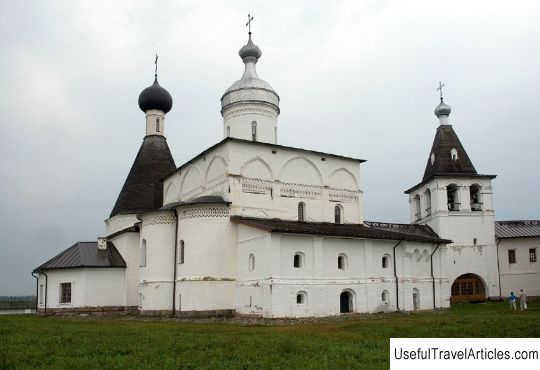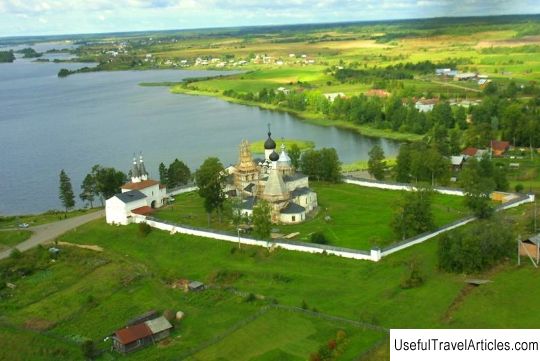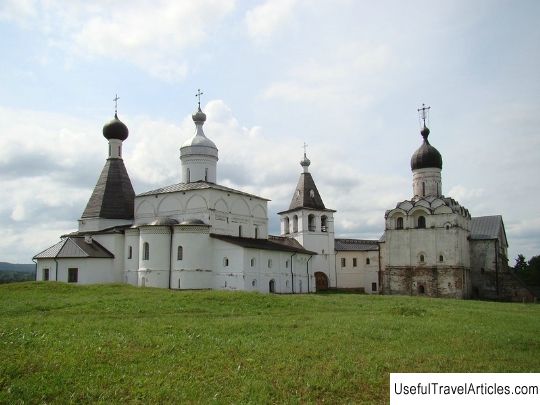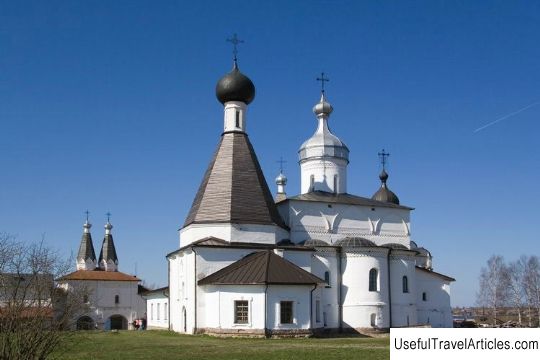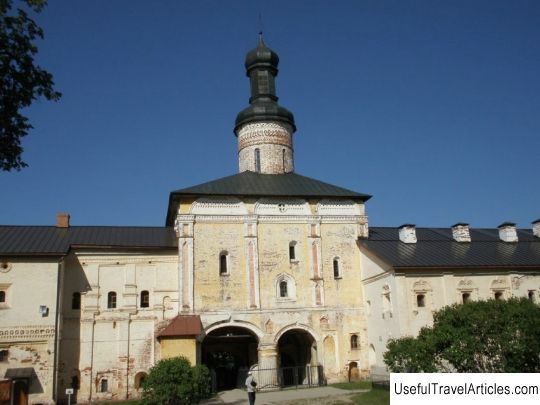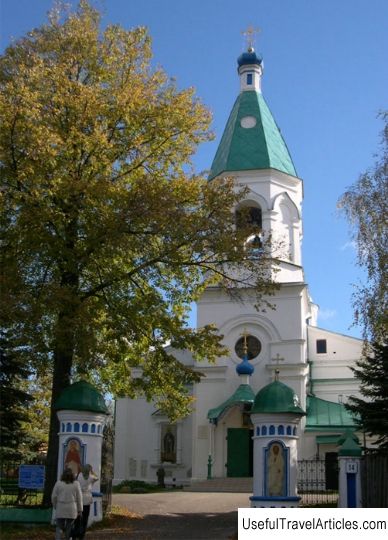Nativity Cathedral of Ferapontov Monastery description and photos - Russia - North-West: Vologda Oblast
Rating: 8,2/10 (694 votes) Nativity Cathedral of Ferapontov Monastery description and photos - Russia - North-West: Vologda Oblast. Detailed information about the attraction. Description, photos and a map showing the nearest significant objects. Photo and descriptionThe Cathedral of the Nativity of the Blessed Virgin Mary, built in 1490, is the first stone structure of the Ferapontov Monastery, which is a first-class example of a kind of Rostov architecture that has preserved the signs of early Moscow stone buildings. A cube-type temple - four-pillar, cross-domed, three-apse. Its volume, set on a high basement, is crowned with three tiers of kokoshniks and a small graceful drum. At the top, the facades are decorated with an ornament of belts made of balusters and ceramic slabs. The drum of the central chapter, as well as the kokoshniks and semicircles of the altar's asps were generously processed. All types of decor are presented in their design - tiled belts, balusters, curly niches. Also, the cathedral had a south aisle, above which a small cupola rose. A small belfry was added on the north side. Inside, the cathedral is divided by four square pillars into three naves with raised arches under the drum. The painting contains 300 compositions and occupies the entire surface of walls, pillars, arches, doors and window soffits. Outside, the cathedral is painted in the center of the wall located from the west, as well as in the lower part of the southern one above the burial place of the Monk Martinian. The murals of the Nativity Cathedral are the only painting of the greatest Russian craftsman Dionysius the Wise, which has survived to our time in its original form and full complement. The painting of the cathedral, together with Dionysius, was carried out by his sons, they spent thirty-four days on it. The area of the painting of the walls of the cathedral is 600 sq.m. Soft colors of painting, harmony of colors and numerous subjects are pleasing to the eye. Also, the ancient icons from the temple belong to the brush of Dionysius. The painting was carried out from top to bottom, in rows, which can be judged by the overlaps of the plaster layers. The compositions of each tier are mainly united by a common theme. "Akathist to the Mother of God" - a pictorial interpretation of the hymn of praise, which consists of 25 songs, occupies a special place among the murals of the monastery. All chants are reflected in Dionysius. The artist arranged the scenes of the akathist in the third tier of murals along the entire perimeter of the temple. Dionysius created one of the most impeccable personifications of the akathist in painting. The proportions and sizes of Dionysius's compositions are organically combined with the interior of the cathedral and the surfaces of the walls. The lightness and grace of the pattern, slightly elongated silhouettes that emphasize the weightlessness of the figures, as well as refined, the paints spreading unearthly light and the richness of tones determine the uniqueness of the painting of Dionysius. According to legend, for the preparation of paints, he, in part, used multi-colored minerals, which in the form of placers were located in the districts of the Ferapontov Monastery. After the German fascists destroyed many Novgorod churches of the XII-XV centuries, the paintings of Dionysius remain one of the the few surviving frescoes of Old Russian ensembles. Among the monuments of Ancient Russia, these frescoes are also distinguished by the absolute preservation of the author's painting that has not been renewed. The murals of the cathedral, as found out during scientific research, have a fairly strong soil with fairly well-preserved paint layers. Since 1981, research work has been carried out in the Nativity Cathedral using specialized methods, which were first developed specifically for the paintings of Dionysius, monitoring the temperature and humidity regime, the state of the gesso and paint layers. The conservation of the frescoes, for the purpose of prevention, and the adjusted temperature and humidity regime made it possible to lay a scientific basis for the preservation of the painting of Dionysius the Wise, as a national wealth - a monument of not only Russian, but also European culture.         We also recommend reading Golubinsky Proval description and photo - Russia - North-West: Arkhangelsk region Topic: Nativity Cathedral of Ferapontov Monastery description and photos - Russia - North-West: Vologda Oblast. |
